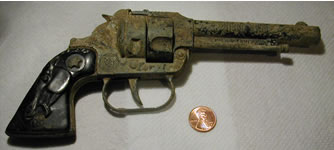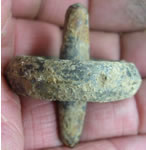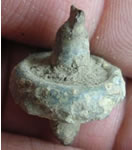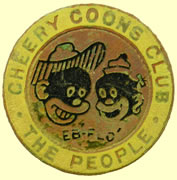| Toy cannons and petronels are on separate page |
Figurines
Also see head and figurines page |
 |
 |
 |
 |
  |
  |
 |
 |
 |
 |
 |
 |
  |
 |
  |
  |
 |
 |
 |
 |
 |
 |
 |
 |
  |
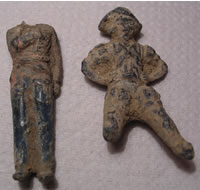 |
  |
 |
 |
 |
 |
 |
        |
  |
  |
  |
  |
  |
  |
   
|
 |
 |
 |
 |
 |
 |
 |
 |
 |
 |
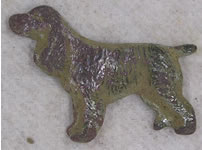 |
 |
 |
 |
 |
 |
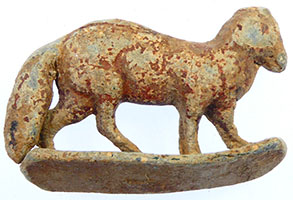

|

|
 |
|
  
  
   
   
 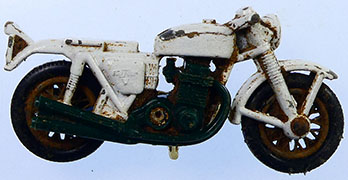
|


|


|
| Alloy badge made in 'Hong Kong' |
1920's lead racing car |
|
  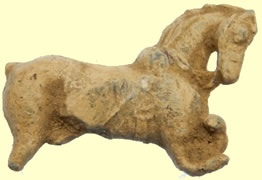
   
   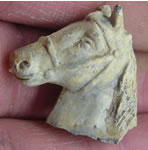
   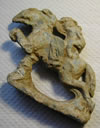

|
| |
| |
Dice |
| Dice have been used since before recorded history, and it is uncertain where they originated. The oldest known dice were excavated as part of a 5000-year-old backgammon set at the Burnt City |
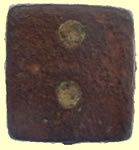  
16th/17thC handmade copper dice - 7mm sq |
 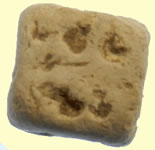   
   
|
| Roman 1st
to 4thC lead dice |
     
Medieval dice |
 |
 |
  |
Petwer dice |
Great eyeball
find, early bone dice |
16th/17thC handmade copper dice |
 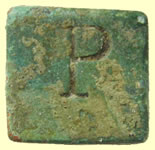     |
| Dice game |
Dominoes |
| Dominoes are believed to have originated in China (see Chinese Dominoes) in the 12th century, though Egyptian or Arabian origins are also theorized. Dominoes appeared in Italy in the early eighteenth century, and spread to the rest of Europe throughout the remainder of the 1700's, becoming one of the most popular games in both family parlors and pubs alike. |
 |
 |
| Georgian copper alloy domino 13.03mm L |
Georgian Miniture copper alloy domino 13.03mm L |
 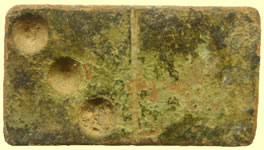 
 
  
 
|
   |
  
Georgian domino |
| |
|
Marbles - clay and glass |
  |
 |
 |
 |
 |
 |
Gaming
See tokens and medallion page |
  |
  |
  |
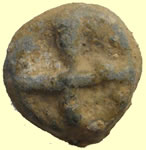  |
  |
 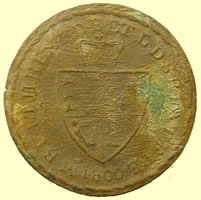 |
Badges |
 |

1950's Golden shred badge |
   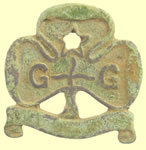
  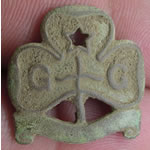  
 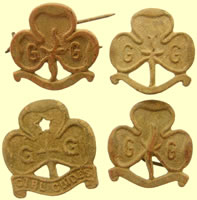 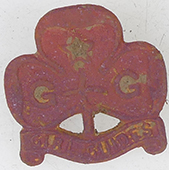
1920'S Girl Guides badge |
  |
The Daily Herald newspaper first published the Bobby Bear comic strips in 1919. Other newspapers, notably in Australia, followed on and these were also immensely popular. By the early 1930s newspaper’s children clubs were in full swing and the Daily Herald launched their own Bobby Bear Club as part of a general media war to increase circulation. Later during the 1930s The Star and The Argus (Melbourne), both of Australia, brought out their own versions of the Bobby Bear Club together with similar badges.
Bobby Bear himself was based on the traditional Steiff bear figure, a high-quality, plush toy figure made from 1902 by the German company of Margarete Steiff GmbH. At about the same time the Teddy Bear toy was also invented in the US where the US president, Theodore ‘Teddy’ Roosevelt lent his nickname to the toy.
The Bobby Bear club was free to join and only required a number of newspaper coupons. On joining, a certificate, handbook and enamel badge were issued with organised club events for children and other announcements printed in their newspapers. The Bobby Bear club like others, was involved in charity and hospital fund raising. One popular event was the Daily Herald’s ‘Help the Hospitals Contest’ that involved children dressing up as Bobby Bear and other related characters to sell raffle tickets and raise funds for hospitals nationwide. They were big events with big prizes too, for example in 1932 there was a £20,000 prize with raffle tickets costing 6d (6 pence) each. An immense amount of money in those recession days when a nice London suburban house would cost less than £5,000
This badge was produced from die stamped brass with two enamels (red & light yellow). There is a pin fitting on the reverse with an imprint of the manufacturer’s name of ‘Roden, London’. The badge measures just slightly above 1” diameter (26mm approx.).
The Australian newspapers mentioned above also issued their own badges. These were the same design and style, the only difference was they substituted the newspaper name with their own. |
 |
  |
| 1930s Cadbury-Bournville Cococub children’s club Badge |
A scarce original 'Robertson's Golly standard pendant badge', miniature size chromium plated example with curly hair, black bow tie and white waistcoat, the reverse stamped in relief the advertising slogan "Golden Shred". retaining original ring
Height with ring 28mm. |
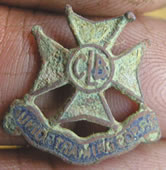 |
|
CLB Junior Training Corp badge
The Church Lads Brigade was formed at St. Andrews Church, Fulham, in 1891. From this one Company started by Walter Mallock Gee, the then secretary of the Church of England Temperance Society, the organization grew rapidly. With cornerstones of the Brigades work being strong Christian principles and healthy physical activity, the numbers grew to having up to 8,000 on parade at the Royal Review of 1908. Meanwhile the Rev. Thomas Milner at a Kilburn Parish Church opened the first company for girls in 1901. Originally they were known as the Church Nursing and Ambulance Brigade for Young Women and Girls, until 1923 when they became an Incorporated Society known as the Church Girls Brigade. A major reorganization in 1936 freed them from all military meaning and intention. The Brigades continued their work through the Second World War and after. |
Dateline: Circa 1930s
Red enamelled pin for the 'Cherry Coons Club'. With Eb' and Flo'. .
Eb' and Flo' was a comic strip produced by British cartoonist Wilfred Haughton. Haughton is best known as being the illustrator of Disney comics in Britain during the 1930s. There is not much information about him available on the internet. |
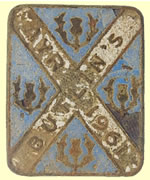 |
 |
| 1961 Butlins badge |
1950's Corgi model club |
  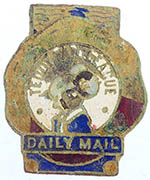 |
Teddy Tail League badge is probably 1930s, the two main makers of these badges were J R Gaunt of London and Roden of London.
'Teddy Tail the cartoon mouse and main character of the Teddy Tail League delighted children with his stories for 40 years. He is distinguished by the suit he wears and always shown with a knot in his tail. A somewhat mischievous guy he loved the occasional prank, parties and getting into all sorts of adventures with his friends. Teddy Tail lived in the little village of Whiskertown whose friend included Dr. Beetle, Piggy, Kitty Puss the cat and Dougie the duckling amongst others.
Teddy Tail’s main claim to fame is that his is the first cartoon strip regularly featured in a British newspaper. His first appearance was in the Daily Mail on the 5th April 1915 and continued until 1962. He disappeared in 1942, a victim of wartime paper shortages and post-war austerity but was revived in 1949 to the delight of his so many fans'. |
|
A dreidel (Yiddish: דרײדל dreydl, Hebrew: סביבון Sevivon) is a four-sided top, played with during the Jewish holiday of Hanukkah. The dreidel is used for a gambling game similar to Teetotum. Each side of the dreidel bears a letter of the Hebrew alphabet: נ (Nun), ג (Gimel), ה (Hei), ש (Shin), which together form the acronym for "נס גדול היה שם" (Nes Gadol Haya Sham – "a great miracle happened there"). These letters also form a mnemonic for the rules of a gambling game played with a dreidel: Nun stands for the Yiddish word nit ("nothing"), Hei stands for halb ("half"), Gimel for gants ("all"), and Shin for shteln ("put"). In the state of Israel, the fourth side of most dreidels is inscribed with the letter פ (Pei), rendering the acronym, נס גדול היה פה, Nes Gadol Haya Po—"A great miracle happened here" referring to the fact that the miracle occurred in the land of Israel
 
  
 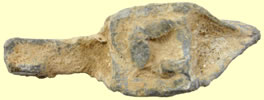 
 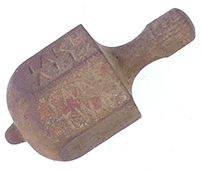 
  
Vintage 6 sided Single level Put and Take Spinner Game, Circa 1940/50s.
Maker - Unknown
Marks - Stamped to the sides with the following ALL PUT, PUT TWO, TAKE ONE, PUT ONE, TAKE ALL and TAKE TWO
Circa - 1940/50s
Construction - Solid Brass
Put & Take tops were very popular from the 19th century to the end of the 1940’s. They could be easily carried in the pocket and used anytime in a bar or home for an quick gambling session. Each player would contribute chips, coins or currency to a pot, they would then take turns spinning the top. There has been many variants of put and take spinners made throughout history; including ones with six sides, eight sides, ten sides and even 12; they come in single level and bi-level with the upper level showing if you won or lost, the bottom tier would tell you how much; the race horse tops, the bottom tier would indicate which horse won, and the upper tier would give the odds.
|





